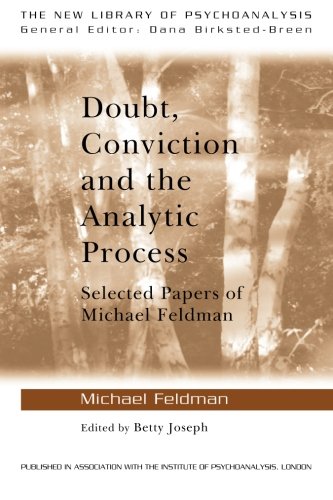

Most ebook files are in PDF format, so you can easily read them using various software such as Foxit Reader or directly on the Google Chrome browser.
Some ebook files are released by publishers in other formats such as .awz, .mobi, .epub, .fb2, etc. You may need to install specific software to read these formats on mobile/PC, such as Calibre.
Please read the tutorial at this link. https://ebooknice.com/page/post?id=faq
We offer FREE conversion to the popular formats you request; however, this may take some time. Therefore, right after payment, please email us, and we will try to provide the service as quickly as possible.
For some exceptional file formats or broken links (if any), please refrain from opening any disputes. Instead, email us first, and we will try to assist within a maximum of 6 hours.
EbookNice Team

Status:
Available5.0
33 reviewsIn this profound and subtle study, a practising psychoanalyst explores the dynamics of the interaction between the patient and the analyst. Michael Feldman draws the reader into experiencing how the clinical interaction unfolds within a session. In doing so, he develops some of the implications of the important pioneering work of such analysts as Klein, Rosenfeld and Joseph, showing in fine detail some of the ways in which the patient feels driven to communicate to the analyst, not only in order to be understood by him, but also in order to affect him.
The author's detailed descriptions of the clinical process allow the reader to follow the actual process that enables the patient to get into contact with thoughts and feelings of which he or she was previously unconscious or only vaguely aware.
Feldman makes the reader aware of the constant dynamic interaction between the patient and the analyst, each affecting the other. He shows how the analyst has to find a balance between doubt, uncertainty and confusion in himself and through this process may arrive at an understanding of what is happening, and by formulating this understanding the analyst can make a significant contribution to the process of psychic change.
This collection of essays not only throws light on fascinating questions of technique, but also reflects on elements that are fundamental to psychoanalytic work. It is essential reading for practising psychoanalysts and those in training, as well as anyone with a general interest in the psychoanalytic relationship between the client and the therapist in the consulting room.